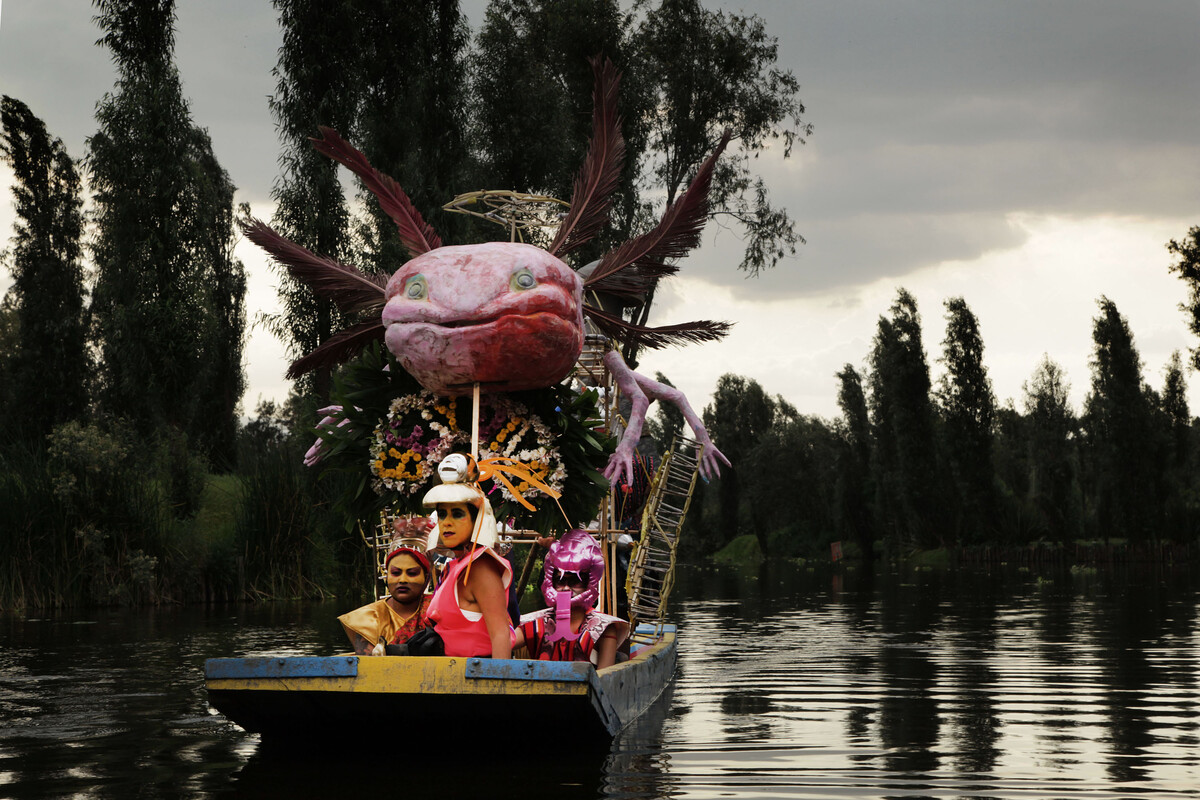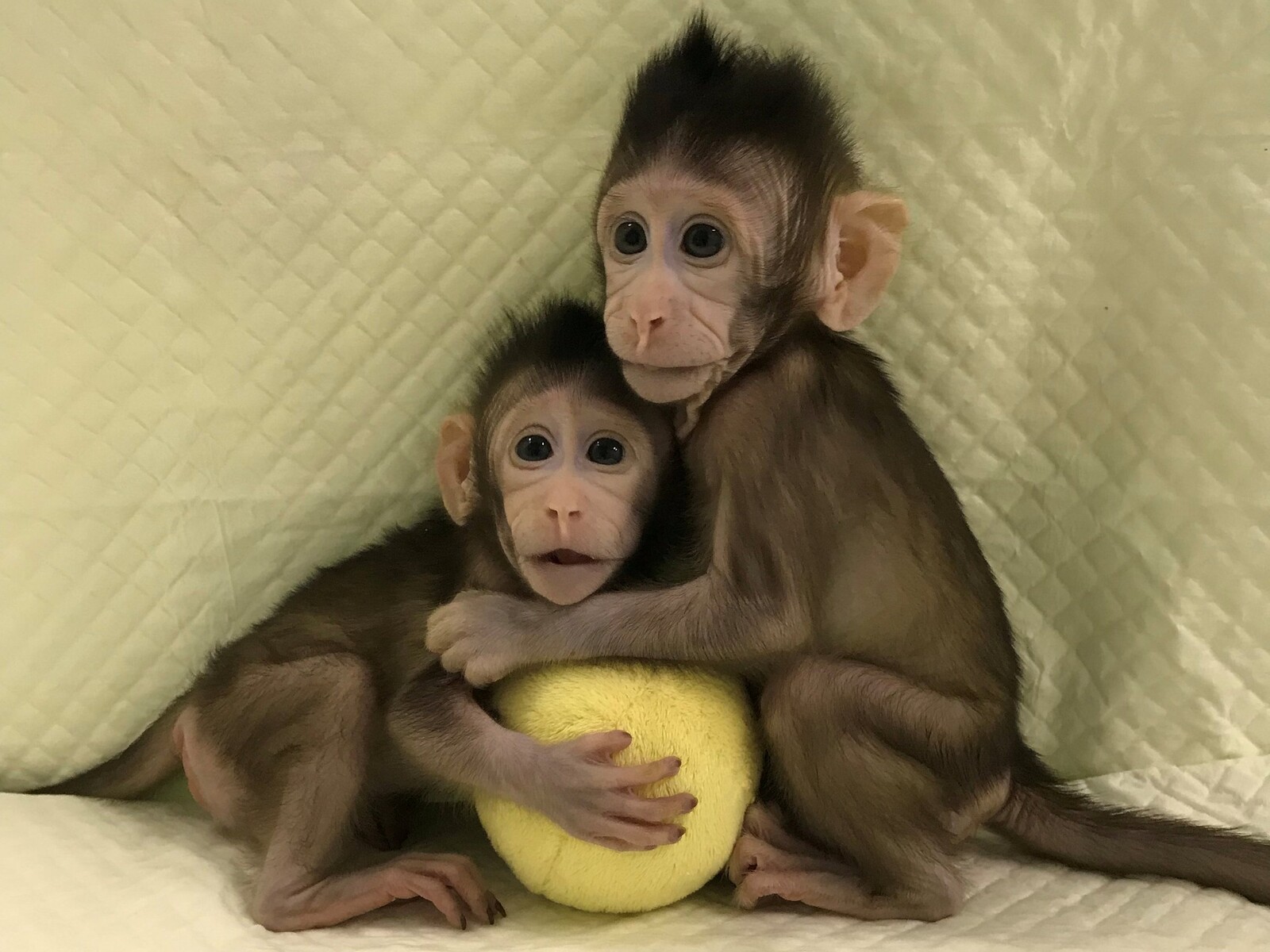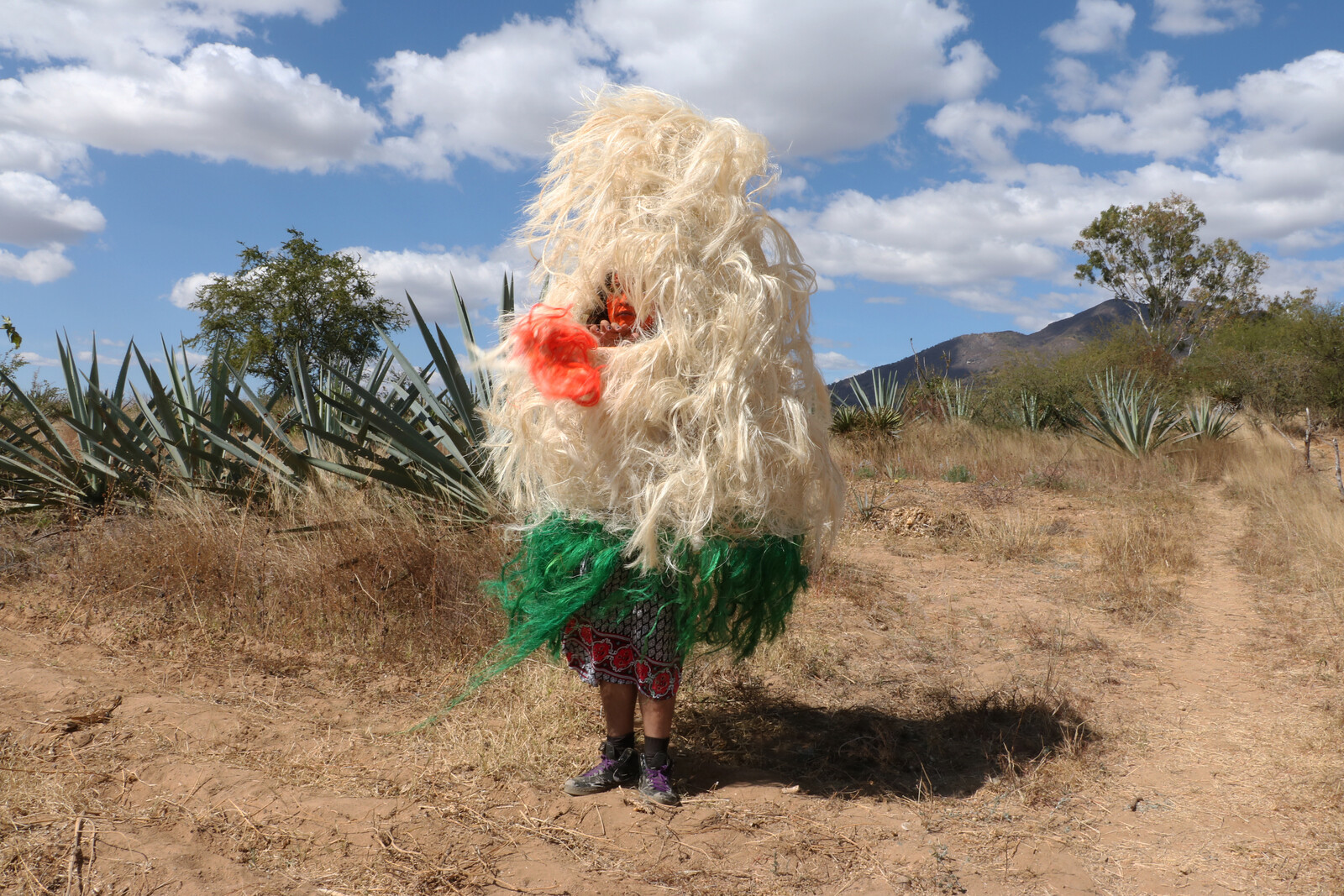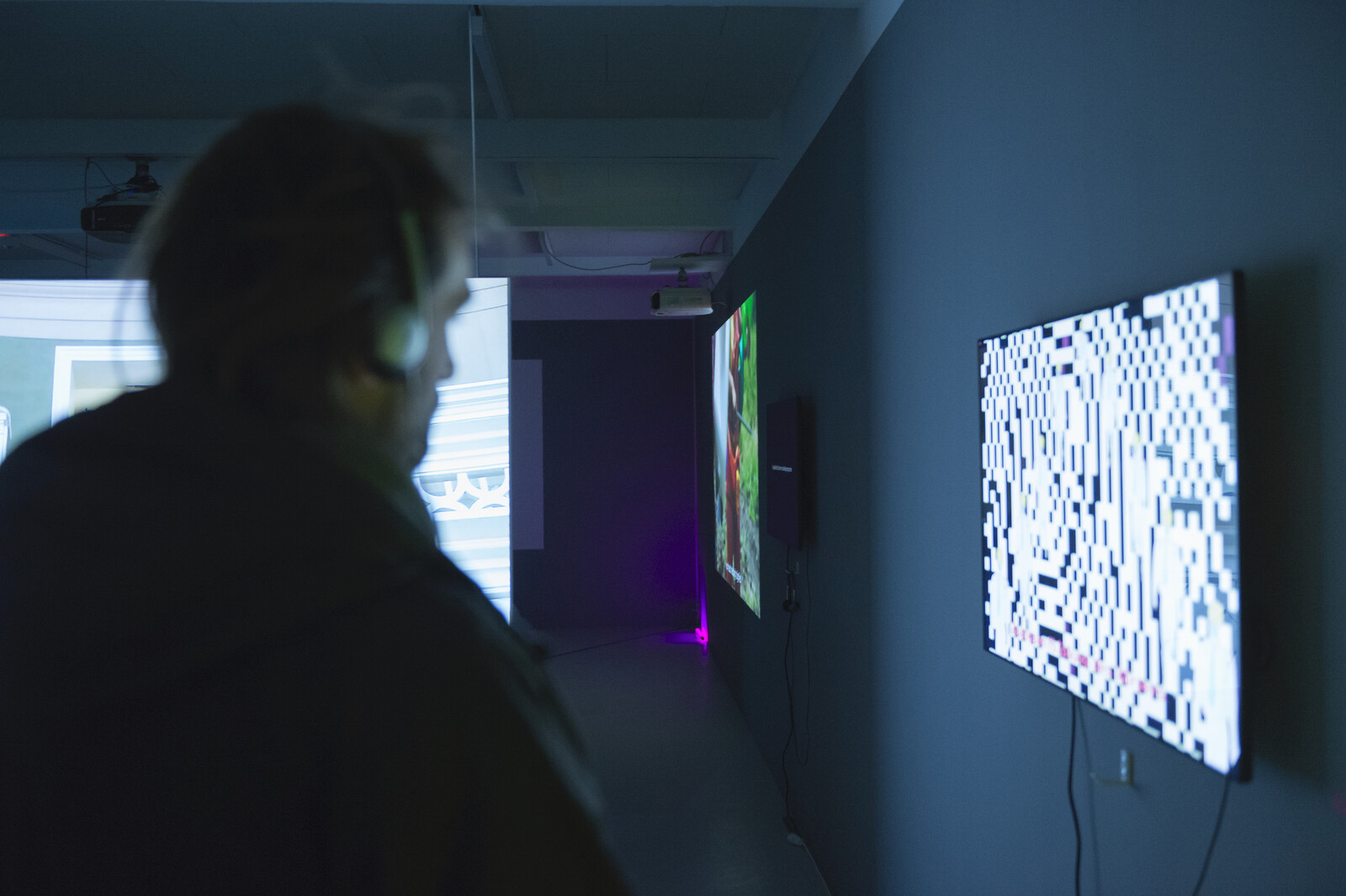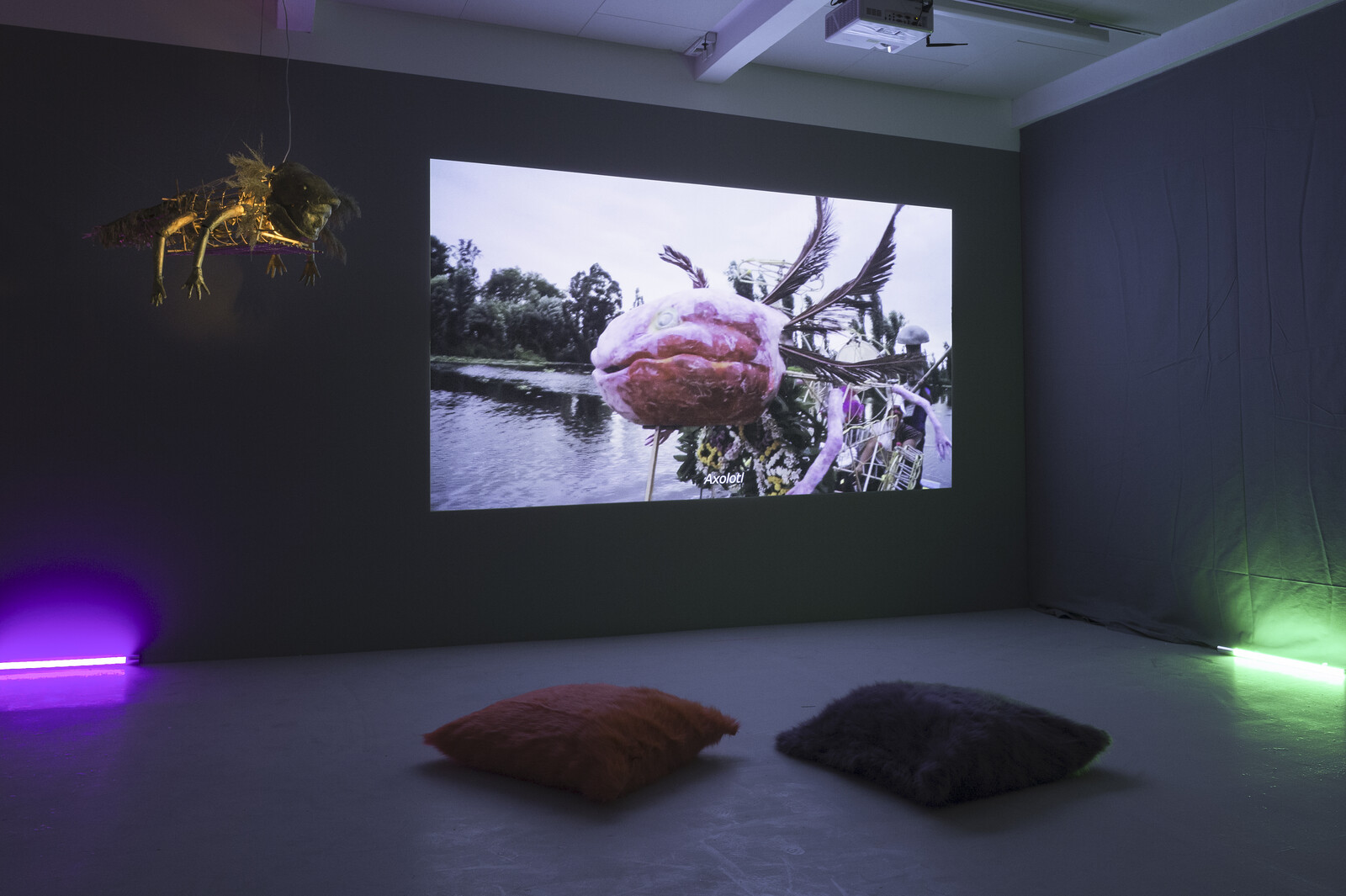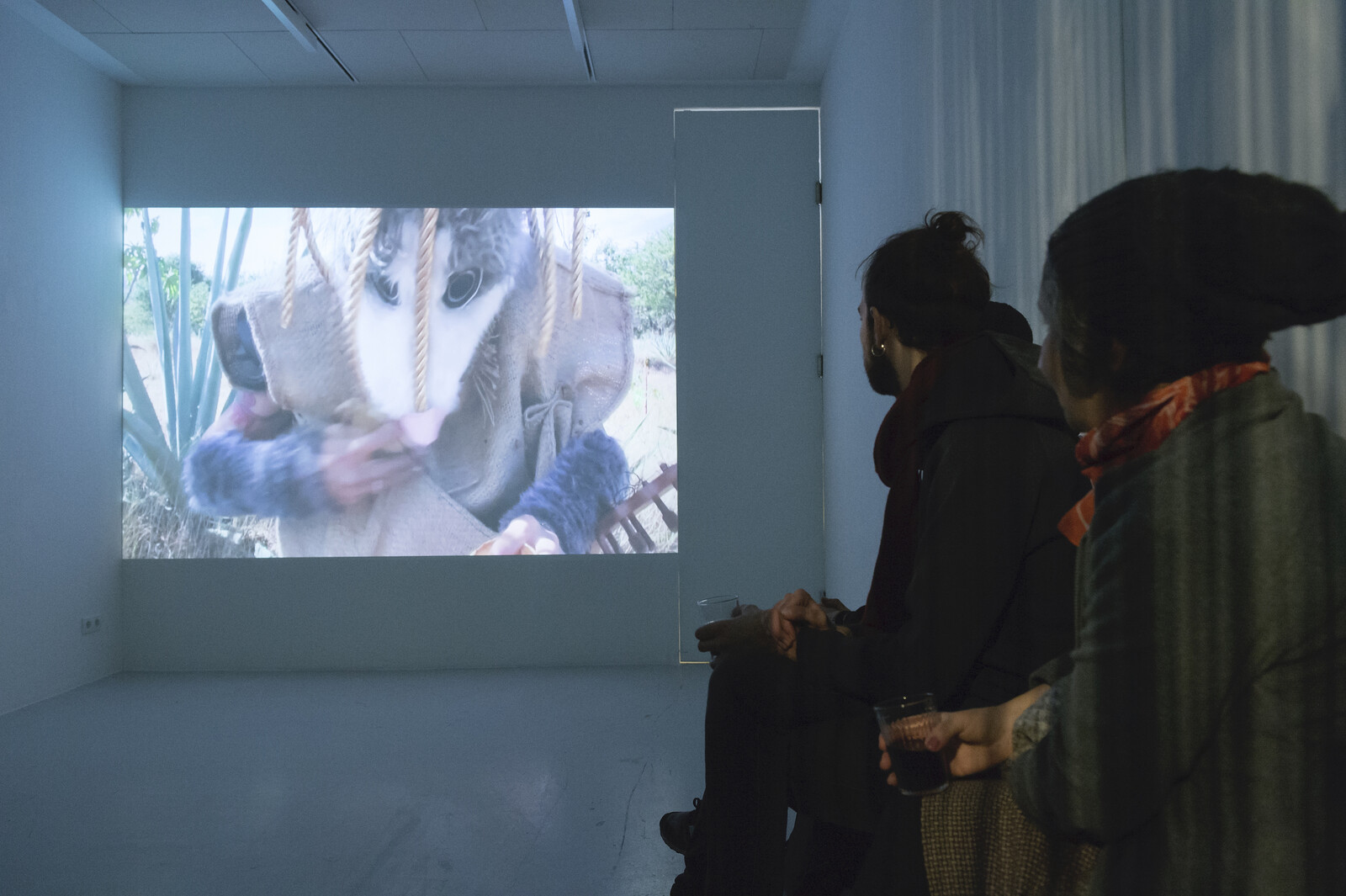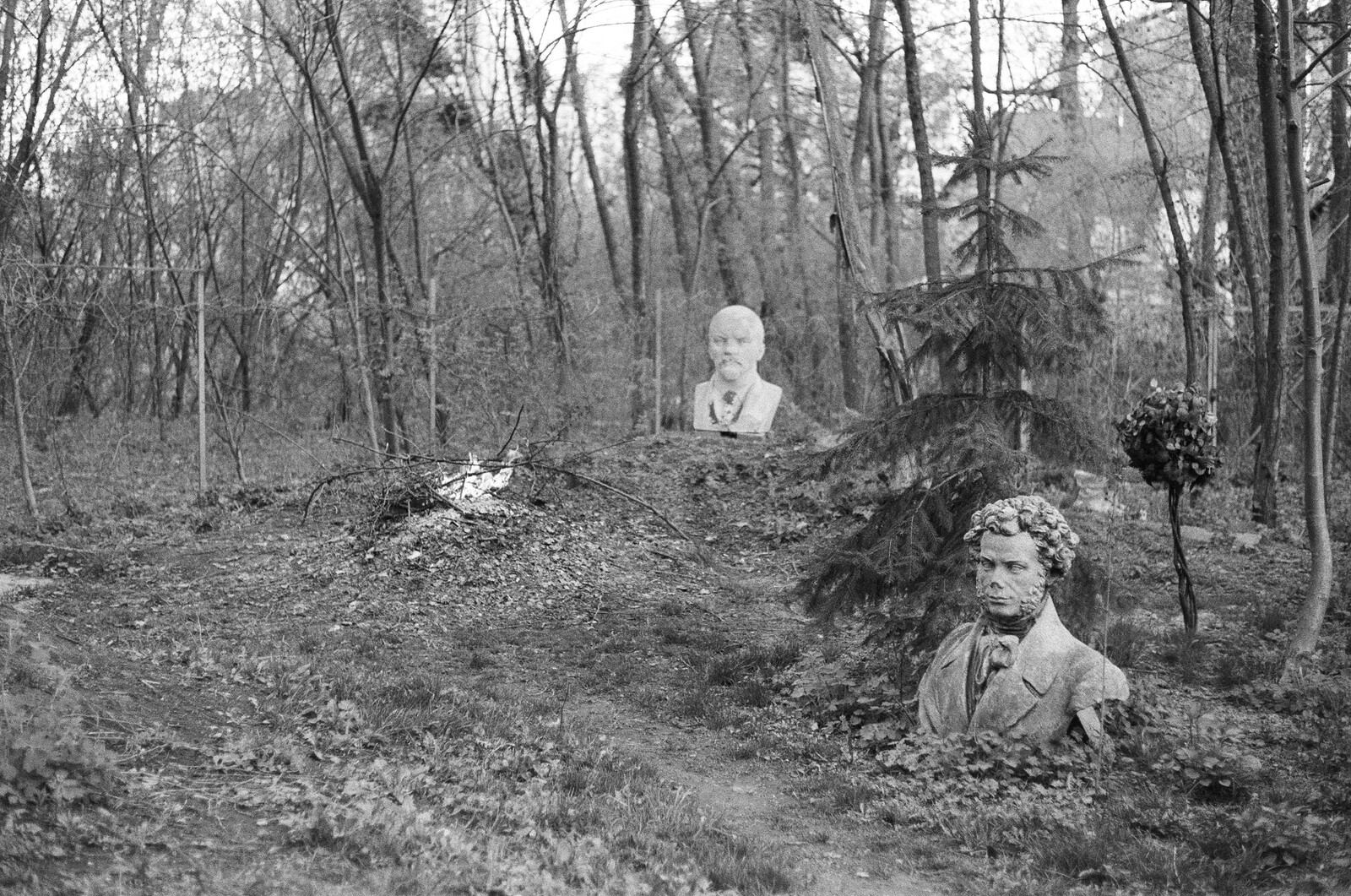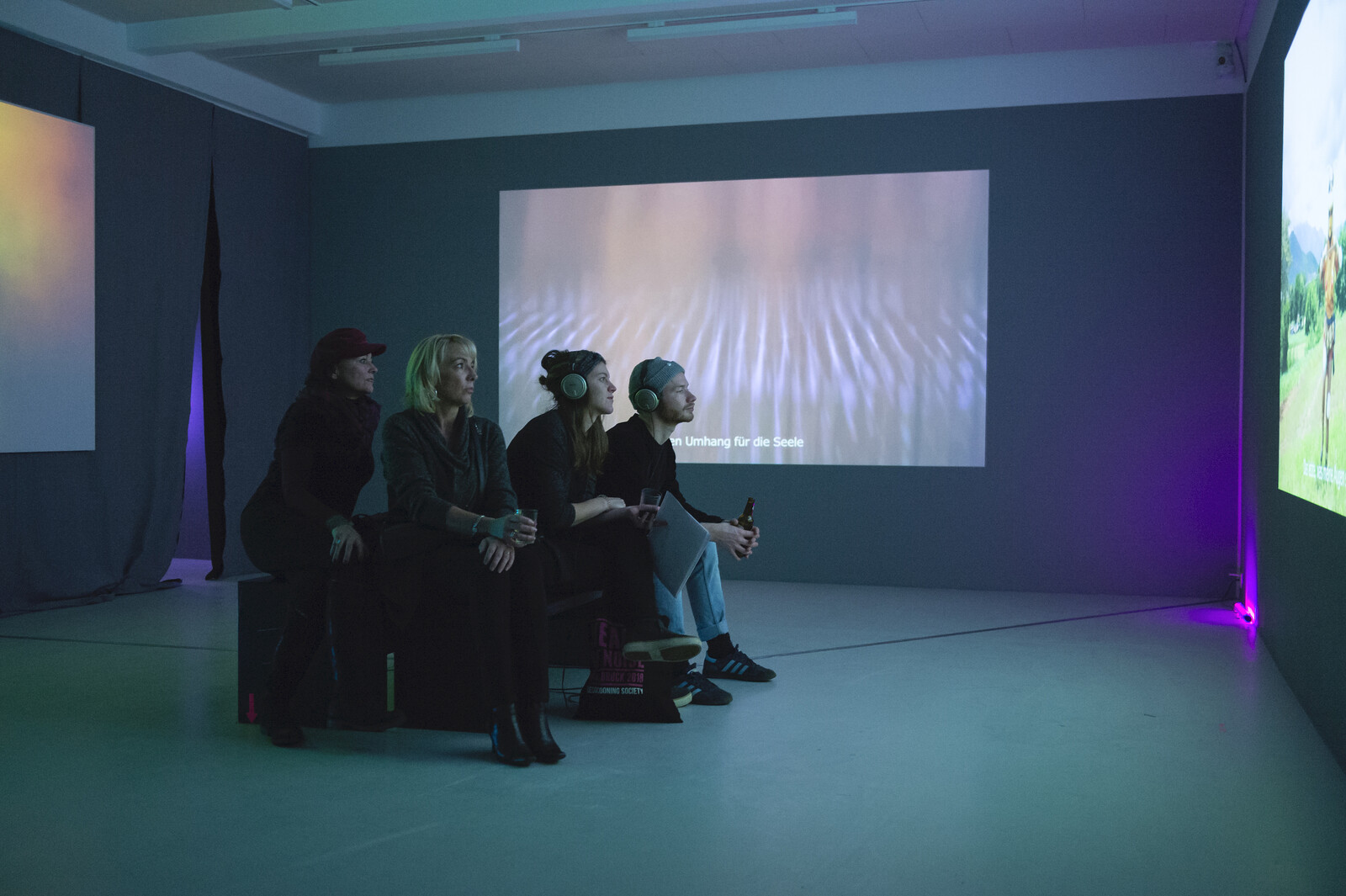Naomi Rincón Gallardo’s solo exhibition at Kunstraum Innsbruck, “MAY YOUR THUNDER BREAK THE SKY,” is a maze of monitor screens and video projections. Rincón Gallardo’s aesthetics are mesmerizing: silver-faced goddesses; crimson electronic nipple extensions that blink playfully; elaborate handmade costumes in red and gold shot against deep-green cabbage fields and murky river water. The exhibition comprises two works: The Formaldehyde Trip (2017), a constellation of three- to five-minute video fragments that occupies the main gallery, and Opossum Resilience (2019), a new video installation, which is shown in an adjacent room. Crafted sculptures dot the spaces in between the moving images. The axolotl—a species of salamander native only to Lake Xochimilco in Mexico City, and the mythological spirit animal of Xolotl, the god of monstrosities—is everywhere in the exhibition.1
On a screen in the main room is a digital animation that resembles a computer game. A figure with Donald Trump’s iconic bouffant bounces maniacally about to a marching band, while an automated voice names forms of structural violence under capitalism: “accumulation by dispossession, subhuman territories,” etc. In an abrupt edit, the screen goes black, and a sound recording of woman human rights defender Bety Cariño plays against the dark screen. The urgency in Cariño’s voice builds over the course of this clip and its confidence overwhelms me. Not because of what she says—her message is simply that she will not be intimidated by the cabrones who murdered fellow environmental activist Mariano Abarca in 2009, and who would murder her four months after this speech. To hear a woman in full possession of her own voice speaking her objection to power and enunciating her fearlessness without a trace of self-doubt is simply exhilarating. It is Rincón Gallardo’s ability to bring together expressive registers—from the playfully mocking to the searingly legitimate—without undermining either element that lends her exhibition its strength. Her sets are saturated with signs that testify to the violence of a powerful neocolonial system, in which mythological creatures and Mesoamerican women and queers nevertheless persist in their world-making.
In a video in The Formaldehyde Trip, a fuchsia-faced axolotl (played by an actor) lies on the beechwood-paneled floor of the Tieranatomisches Theater in Berlin, its arms and legs spread akimbo like the gods inscribed in stone in Aztec temples, and stares at the ceiling.2 A person approaches. Clad in an old-fashioned suit jacket and short pants made from floral-print fabric, the character references Alexander von Humboldt, the Prussian natural scientist who traveled extensively throughout South and Latin American at the turn of the nineteenth century and introduced the axolotl to Europe.3 Giant, dusty red flowers spread out over his white body like the illustrations from nineteenth-century botanical almanacs; taking up space, claiming knowledge. Humboldt crouches and strikes the axolotl’s nipples with the palm of each hand. The nipples light up, flashing like an arcade video game. Satisfied, Humboldt tucks his silver patent-leather cowboy boots together, draws his knees into his chest, and curls into a fetal position in the space between the axolotl’s limbs. This white person has set out along a different path altogether. Earlier in the clip, he intones: “I will study you, I will classify you, I will conserve you for perpetuity.” Now he shelters in the creature’s effigy.
According to Aztec mythology, Xolotl took its form to avoid punishment from his twin, the feathered serpent god Quetzalcoatl.
The artist notes in correspondence with me that the “figure recalls the Mexican Goddess of the Moon, Coyolxauhqui, who embodies the power of nighttime. Coyolxauhqui is depicted as a mutilated and contorted female body.”
Earlier in the video, Humboldt is shown caressing a plaster bust of Thomas Jefferson over a schematic map. “Before Humboldt came back from his expedition to the Americas, he delivered his maps to Thomas Jefferson,” the artist told me, “who was a fervent advocate of the ideology of manifest destiny. It envisioned the expansion of the United States over the American continent from the Pacific to the Atlantic coastlines.” The relationship between Humboldt’s scientific exploration and the genocidal colonialism of European settlers in North America is the subtext here.
